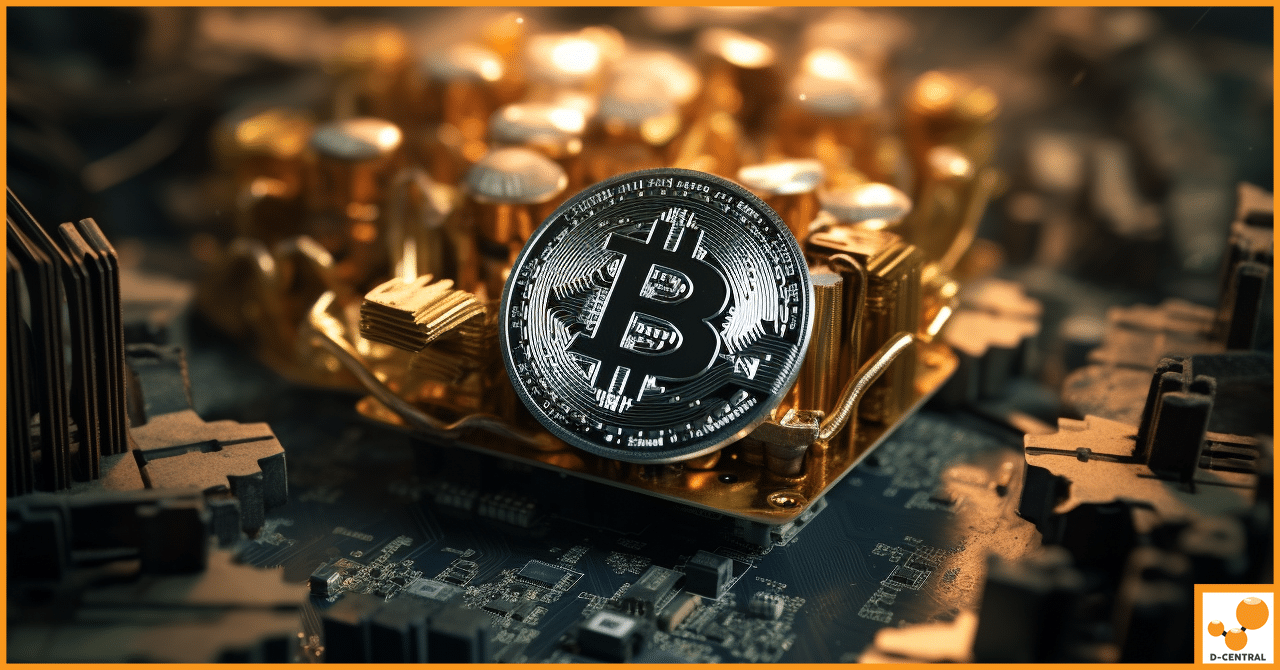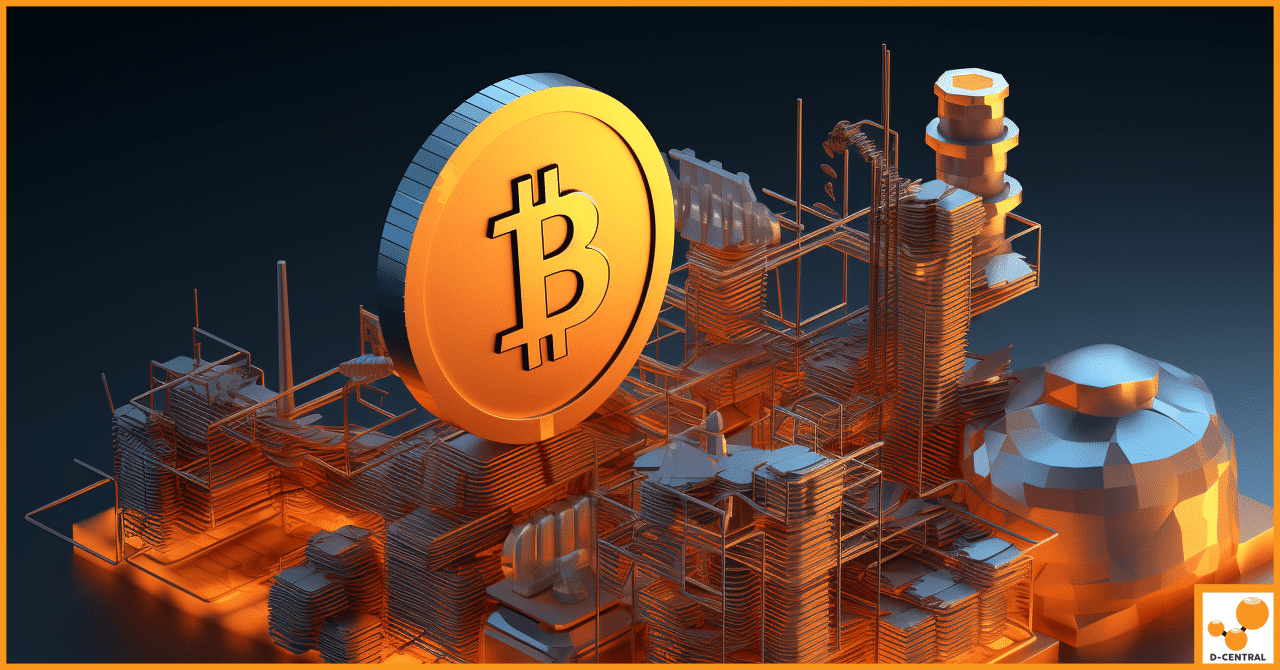
From S1 to S21: The Journey of Bitmain’s Antminer Series
Bitmain stands as a titan in the cryptocurrency mining industry, a testament to its relentless innovation and commitment to producing
4479 Desserte Nord Autoroute 440, Laval, QC H7P 6E2

In the dynamic world of cryptocurrency mining, optimizing the performance of mining hardware is paramount for miners aiming to enhance profitability and operational efficiency. One prevalent technique to achieve this is overclocking—an advanced method that involves adjusting the hardware settings beyond the manufacturer’s default configuration to increase the processing power. Overclocking primarily focuses on boosting the hash rate, which quantifies the number of cryptographic calculations the miner can perform per second. A higher hash rate not only accelerates the rate at which a miner can solve the complex mathematical puzzles required to validate transactions and mine new blocks but also increases the likelihood of earning mining rewards.
Antminer, a popular brand of ASIC (Application-Specific Integrated Circuit) miners developed by Bitmain, stands out in the mining industry. These devices are engineered specifically for mining cryptocurrencies like Bitcoin, providing an optimized balance between power consumption and computational ability. By overclocking an Antminer, miners can squeeze out higher performances from their setups, potentially leading to increased mining outputs and reduced electricity usage per unit of cryptocurrency mined. This makes overclocking a highly attractive strategy, particularly in competitive mining environments where maximizing the efficiency of each watt of electricity is crucial.
In this guide, we delve into the specifics of overclocking Antminer ASIC miners, exploring how strategic adjustments can lead not just to enhanced mining speeds but also to improved overall profitability. We’ll cover the essential concepts, practical steps, and consider both the potential benefits and risks associated with pushing your mining hardware beyond its intended limits.
An ASIC (Application-Specific Integrated Circuit) miner is a device specifically designed to perform a single type of computation. In the realm of cryptocurrency, these devices are optimized for mining— the process of verifying and adding transaction records to a public ledger (blockchain). Unlike general-purpose hardware like CPUs or GPUs, ASIC miners are engineered from the ground up to execute the cryptographic algorithms used by a specific cryptocurrency, making them exceptionally efficient at mining tasks.
ASIC miners dramatically improve the hashing power compared to their predecessors, focusing solely on mining efficiency. This focus allows them to solve blockchain puzzles faster, contributing to higher earnings potential and increased transaction verification speed.
Examples of ASIC Miners with a Focus on the Antminer Series by Bitmain
Bitmain, a leading player in the mining industry, produces the Antminer series, which is among the most popular and effective ASIC miners on the market. Models range from the older Antminer S9, known for its initial affordability and adaptability, to the latest Antminer S19 series, which offers significant improvements in power efficiency and hash rate capabilities. These miners are central to Bitcoin mining operations, capitalizing on ASIC technology to optimize the balance between power consumption and output.
History and Evolution of the Antminer Series
The Antminer series has evolved significantly since its inception, driven by the escalating demands of the blockchain networks and the intense competition in mining profitability. Bitmain launched its first Antminer in 2013 and has since been at the forefront of ASIC miner technology. Each new iteration of the Antminer series has brought about enhancements in energy efficiency, processing power, and compactness, addressing the growing complexity of mining tasks and the surge in energy costs associated with them.
Key Features and Specifications That Make Antminers Popular
Antminers are renowned for their robust engineering and high hash rate efficiency. Key features include:
These features make Antminers a favored choice among both amateur enthusiasts and large-scale mining operations, embodying a balance of performance, efficiency, and ease of use that few other devices can match.
Cryptocurrency mining is a fundamental process that validates and records transactions on a blockchain, a decentralized digital ledger. Each block in the blockchain contains a list of transactions, and mining involves adding these blocks to the existing blockchain in a manner that is secure and resistant to modification.
The process begins when transactions are broadcast to all network participants. Miners collect these transactions from the memory pool and begin forming a block. To add a block to the blockchain, miners must solve a complex mathematical problem, known as proof of work, which requires computational power. The first miner to solve the problem gets the right to add the new block to the blockchain and is rewarded with cryptocurrency, such as Bitcoin.
This mechanism not only secures the network by making it computationally expensive and thus deterring fraudulent alterations but also ensures that all transactions within the block are valid as per the blockchain’s protocol.
Importance of Hash Rate in Mining
The hash rate, or hashing power, is a critical metric in mining that measures the number of calculations a miner can perform in a second. A higher hash rate increases a miner’s chances of solving the mathematical problem first and hence securing the block reward. Since the difficulty of mining adjusts in response to the total network hash rate to maintain a consistent block time, having a higher individual hash rate can significantly advantage miners in a competitive environment.
Factors that Affect Mining Profitability
Several factors determine the profitability of mining operations:
The Role of Equipment Efficiency and Electricity Costs
Equipment efficiency and electricity costs are pivotal in mining profitability calculations:
These dynamics make it essential for miners to continually assess and upgrade their mining setups in response to shifting market conditions, technological advancements in mining hardware, and changes in electricity prices.
Overclocking refers to the process of increasing the clock rate of a miner’s hardware to exceed the factory-set performance. This technique allows the hardware to perform more calculations per second, thus increasing its hash rate. For cryptocurrency miners, the hash rate is a critical metric—it measures the number of times a miner can attempt to solve the blockchain algorithm per second. By overclocking, miners enhance their equipment’s ability to compete for and solve blocks more rapidly, which directly increases their potential earnings.
The effect of overclocking on mining performance can be dramatic. With increased hash rates, miners are more likely to be the first to validate a new transaction block, thereby earning the block reward and any transaction fees it includes. This acceleration in performance can significantly increase a miner’s profitability, especially in competitive mining environments.
Potential Increases in Hash Rate and Their Impact on Earnings
The potential increase in hash rate through overclocking depends largely on the capability of the hardware and the extent of the overclock. For instance, older models like the Antminer S9 might see a moderate increase in hash rate, while newer models like the Antminer S19 could potentially operate at much higher efficiencies when properly overclocked. This increase in hash rate not only boosts the immediate profitability but also enhances the overall lifecycle earnings of the mining hardware, provided that the equipment is maintained properly and not pushed beyond safe operational limits.
Power Consumption vs. Output
While overclocking can increase a miner’s hash rate and potential earnings, it also raises the hardware’s power consumption. This relationship between power consumption and output is crucial because it directly affects the cost-effectiveness of the mining operation. Higher power consumption means higher electricity bills, which can negate the financial benefits of increased mining output if not managed correctly.
How Effective Overclocking Can Reduce Operational Costs
Effective overclocking involves not just enhancing the miner’s performance but doing so in a way that optimally balances increased output with energy use. Advanced overclocking techniques and settings can help achieve higher computational efficiency, meaning more hash power per watt of electricity used. By carefully adjusting the overclock to hit a sweet spot where the increase in energy costs is proportionally less than the increase in revenue from mining, miners can maximize their profits.
Moreover, using energy-efficient hardware like the latest Antminer models, combined with strategic overclocking, can minimize energy waste and reduce operational costs. This efficiency is crucial for maintaining profitability, especially in regions with high electricity prices or in market conditions where cryptocurrency values are lower.
By understanding and implementing these strategies, miners can ensure that overclocking contributes positively to both their performance and their bottom line, making their operations more sustainable and profitable in the long run.
Overclocking an Antminer can significantly boost its performance by enhancing the hash rate, which in turn can increase mining profitability. However, this process should be undertaken with care to avoid potential risks such as increased hardware wear and voiding warranties.
Before you begin, ensure your hardware is ready for overclocking:
To overclock using custom firmware like BraiinsOS, you can install it using an SD card or the BOS Toolbox. Here’s a brief guide on both methods:
chmod to make it executable.After overclocking your Antminer:
Overclocking can be a powerful way to enhance your mining operation’s efficiency and profitability if managed correctly. Always ensure you follow safety guidelines and monitor your system’s response to avoid potential damage and ensure longevity.
Overclocking can significantly increase the performance of Antminer hardware by pushing it beyond designed operational limits. However, this comes with increased risks:
Warranty Implications and Legal Considerations
To effectively manage the risks while exploiting the benefits of overclocking, consider the following strategies:
When to Opt for Overclocking Based on Individual Mining Goals and Setups
Balancing the risks and benefits of overclocking requires careful consideration of your operational environment, hardware capabilities, and long-term profitability goals. By thoughtfully managing these factors, miners can safely explore the potential of overclocking to enhance their mining operations.
In this guide, we’ve explored the intricate process of overclocking Antminers, covering everything from the necessary preparations to advanced strategies for enhancing mining performance.
Overclocking, while beneficial, comes with its risks, such as potential hardware failure and voided warranties. It’s vital to proceed with caution and make informed decisions based on comprehensive understanding and community knowledge.
We encourage you to share your experiences and insights with the community. Whether you’re a beginner or a seasoned miner, your contributions can help others navigate the complexities of overclocking. If you have stories of success or lessons learned from failures, please comment below.
What is overclocking in the context of cryptocurrency mining?
Overclocking is the process of adjusting the hardware settings of mining equipment, such as ASIC miners, beyond the manufacturer’s default configuration to increase the processing power and hash rate. This technique aims to enhance mining profitability and efficiency by accelerating the rate of cryptographic calculations that the miner can perform.
Why is overclocking popular among cryptocurrency miners?
Overclocking is popular among cryptocurrency miners because it can significantly increase the hash rate of mining hardware, potentially leading to increased mining outputs and a higher likelihood of earning mining rewards. It enables miners to maximize the efficiency of their hardware, making it a desirable strategy in competitive mining environments.
What are the potential benefits of overclocking Antminer ASIC miners?
The potential benefits of overclocking Antminer ASIC miners include enhanced mining speeds, improved overall profitability by increasing the hash rate, and reduced electricity usage per unit of cryptocurrency mined, provided the power consumption is managed effectively alongside the overclock.
What are the risks associated with overclocking?
Risks associated with overclocking include increased hardware stress and wear, potentially leading to a shorter lifespan of the mining equipment, higher risk of component failures due to additional heat generation, system instability, and voiding of the manufacturer’s warranty.
How can one overclock an Antminer?
Overclocking an Antminer involves several steps including ensuring the miner is ready for overclocking (such as firmware updates and stable power supply), using custom firmware like Braiins OS, adjusting performance settings through software, and carefully monitoring and maintaining the hardware post-overclock for optimal performance and equipment longevity.
What factors should be considered before deciding to overclock mining hardware?
Before overclocking mining hardware, factors to consider include the profitability analysis to ensure the benefits outweigh the additional costs, the capability and potential of the specific hardware model for overclocking, the ambient environmental conditions for the mining operations, and the ability to manage the increased heat output effectively.
How can the risks of overclocking be managed?
Managing the risks of overclocking involves implementing advanced cooling solutions to dissipate additional heat, making incremental changes to the overclock settings while monitoring the system’s response, and conducting regular hardware maintenance to prevent dust buildup and thermal paste degradation.
When is overclocking advisable for cryptocurrency miners?
Overclocking may be advisable for cryptocurrency miners when the potential increase in mining profitability from the enhanced hash rate exceeds the additional operational costs such as higher electricity consumption and potential hardware replacement expenses. Miners should also consider their specific mining environment and hardware capability before overclocking.
DISCLAIMER: D-Central Technologies and its associated content, including this blog, do not serve as financial advisors or official investment advisors. The insights and opinions shared here or by any guests featured in our content are provided purely for informational and educational purposes. Such communications should not be interpreted as financial, investment, legal, tax, or any form of specific advice. We are committed to advancing the knowledge and understanding of Bitcoin and its potential impact on society. However, we urge our community to proceed with caution and informed judgment in all related endeavors.
Related Posts

Bitmain stands as a titan in the cryptocurrency mining industry, a testament to its relentless innovation and commitment to producing

In the dynamic world of cryptocurrencies, Bitcoin stands as a pioneering force, reshaping our understanding of digital finance. At the

In the realm of disruptive technologies, few have made as significant an impact as Bitcoin and 3D printing. Bitcoin, the